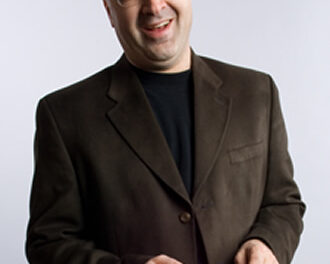Orchestra concerts on Thursdays and Fridays in Dana Auditorium feature the Eastern Music Festival‘s two all-student “Festival” orchestras. The full-sized orchestras are pretty much equal in talent. There is some fluidity in membership between them, and extra players can be called in for big works. The July 6 musicians had a hard act to follow; the inspired Shostakovich Symphony 10, heard July 5, was one of those special concerts that make live concerts so rewarding. Nevertheless, there was much to admire about the July 6 performance of challenging pieces by Mozart and Mahler. This was Winston-Salem Symphony Music Director Robert Moody’s debut with the EMF, but he is an “old hand” at music festivals, having been active as a choral conductor at the Brevard Music Festival early in his career.
Mozart gives musicians no cover for the slightest out-of-place note; it will stand out like curdled milk. Moody led his young artists through a superb accompaniment for four superb EMF faculty soloists— Les Roettges, Randall Ellis, Jeff Fair, and Kristin Jensen — in Mozart’s Sinfonia Concertante in E-flat, K.297b, for flute*, oboe, horn, and bassoon. The give-and-take between the soloists as their musical lines were contrasted, paired, and interwoven, was a joy for both the ear and eye. Equally delightful was Moody’s beaming at his musicians as he led them precisely and stylishly through the elegant score. Each string section played as one, exactly on pitch and in time. Many of the orchestra players smiled with delight as they finished bowing a particularly complex passage. This was playing of a high order.
Mahler’s Symphony No. 1 in D Major is a challenge for any professional orchestra, much less one consisting of advanced students without years of experience under their belts. This is off-set by the students’ palpable enthusiasm as they deal with a work for the first time. Before leading the piece, Moody, as is his wont in Winston-Salem, made a few salient comments, placing the work in context with its time and reflecting upon its nickname, “Titan.” The performance was not helped by several egregious sources of noise from the audience. Sustained slow playing such as the quiet opening of the Mahler is hard enough. Only a few bars in, a loud cell phone chimed out an ascending scale! Later in the same movement, just before one of Moody’s unusual touches, off-stage brass joining from the balcony, there was something like radio crosstalk from somewhere in the front of the hall. There were some rough spots from several sections in the first movement. The most unfortunate was from the poor oboist, whose first notes revealed the reed of every player’s nightmare! This was pretty quickly replaced for the rest of the concert. Each subsequent movement was markedly more effective as the players became more assured and confident, culminating in a moving and solid interpretation. The brass, especially the horns, were impressive, not least when Moody, observing Mahler’s instructions, had the entire section stand and play during the end of the finale. Mahler’s ironic treatment of death in the third movement, with its implacable timpani and suggestion of klezmer music, was very well played.
*Note: The Sinfonia concertante, the authorship of which is still a subject of scholarly debate, was presented at the EMF in an edition by Robert Levin that restores the flute (from the lost original manuscript) in place of the solo oboe usually heard in performances of this score.











